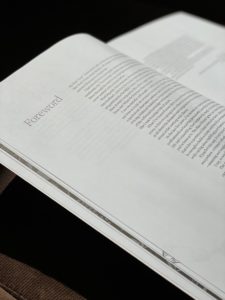12 May A Peek Inside the 16th Edition of the Graphic Artists Guild Handbook
The 16th ed. of the Graphic Artists Guild Handbook: Pricing & Ethical Guidelines is reorganized, expanded, and new chapters have been added to create a more relevant resource to how graphic artists work today. Read the book’s Forward written by Jessica Abel.
My first “real” illustration job, in the mid-90s, came from Steve Heller at The New York Times Book Review. Of course, it did. Steve is famous for giving new, untried illustrators a big break.
I had already been a scrappy cartoonist for several years, self-publishing minicomics by “borrowing” a photocopier at my friend’s night job and selling them through the mail to an underground network of fans for $2 a pop, but I’d never worked with a client before.
Working with Steve was easy. He was clear with his instructions, gave excellent feedback, didn’t try for a crazy rights grab, and paid on time. None of which prepared me for the NEXT client. What to charge? How to make sure I get paid? How should I respond to this zillion-page contract? Wait, you want a contract from me? What the hell does that look like?
I am essentially self-taught. I didn’t go to art school, and I had to figure out how to build an art career on my own. That felt scary. Fortunately, more experienced illustrators pointed me to the Graphic Artists Guild Handbook: Pricing & Ethical Guidelines. It was astonishing. Reading this hefty tome, full of the collected knowledge of thousands of professional graphic artists, I felt like I was donning a suit of armor.
What I’ve learned since then, as a professor in art school for the last 20 years, is that even going to art school is no guarantee you’ll be taught anything at all about the demands and complexities of becoming successful as a professional artist working with clients.
In the last five years, I’ve moved into teaching and coaching mid-career professionals and aspiring pros as well. Learning to take charge of your creative life isn’t something that happens by magic or osmosis, no matter how long you’ve been at it. The Muse doesn’t grant you creative business acumen. Yet, that’s the expectation I find most of us have—that artistic talent alone should be enough to build a career and that if you’re an artist, there’s something wrong with caring about building your business.
If you feel this way, it isn’t your fault. The messages reinforcing that idea are everywhere. A friend talked about how “normals” see us as “purple unicorns”—amazing and magical yet utterly useless in any practical context.
I say, screw that.
The core underlying principle of everything I teach and do is that you can take control of your life. You can build a sustainable, resilient, creativity-centered career. I want to demystify the process and put tools in the hands of every person who wants to build a successful creative business.
And one of the most powerful tools I’ve ever encountered is this book. It’s the only textbook I make my undergrads buy.
It’s not only about pricing (the first thing anyone looks at, I’m sure).
It’s about ETHICAL guidelines—the standards for how we should be treated as professionals and for how we should conduct business. It’s a framework for seeing your own business as having the same legal rights and standing as the largest corporations. It’s a tool to help you recognize the value of your work as intellectual property—how to protect it and how it can continue to support you.
It’s the collected and compounded wisdom of our peers who came before us, generously sharing their knowledge, trying to save us from their missteps, in a kind of virtual mutual aid society.
It’s eminently practical but embodies a subtly life-changing shift of perspective. When you hold this book in your hands, you hold the power to take control of your creative career.
Jessica Abel
Autonomous Creative and the Creative Focus Workshop
www.jessicaabel.com

Guild members will be receiving their copy of the Handbook free as a member benefit. Members who have moved or changed residences should contact the Guild to inform our administrator of their change of address. The Handbook can be purchased from Amazon starting May 18 and can be pre-ordered before then. MIT Press lists several other outlets for purchasing the book, including Barnes & Noble and IndieBound.
